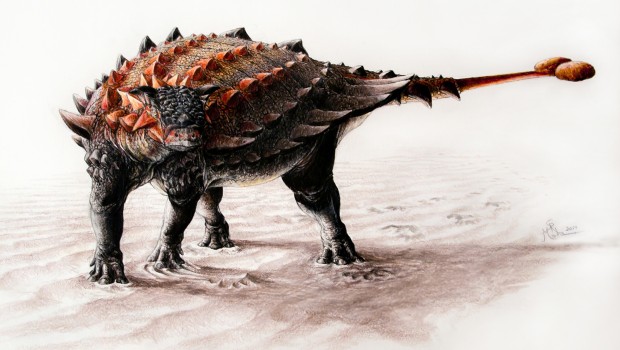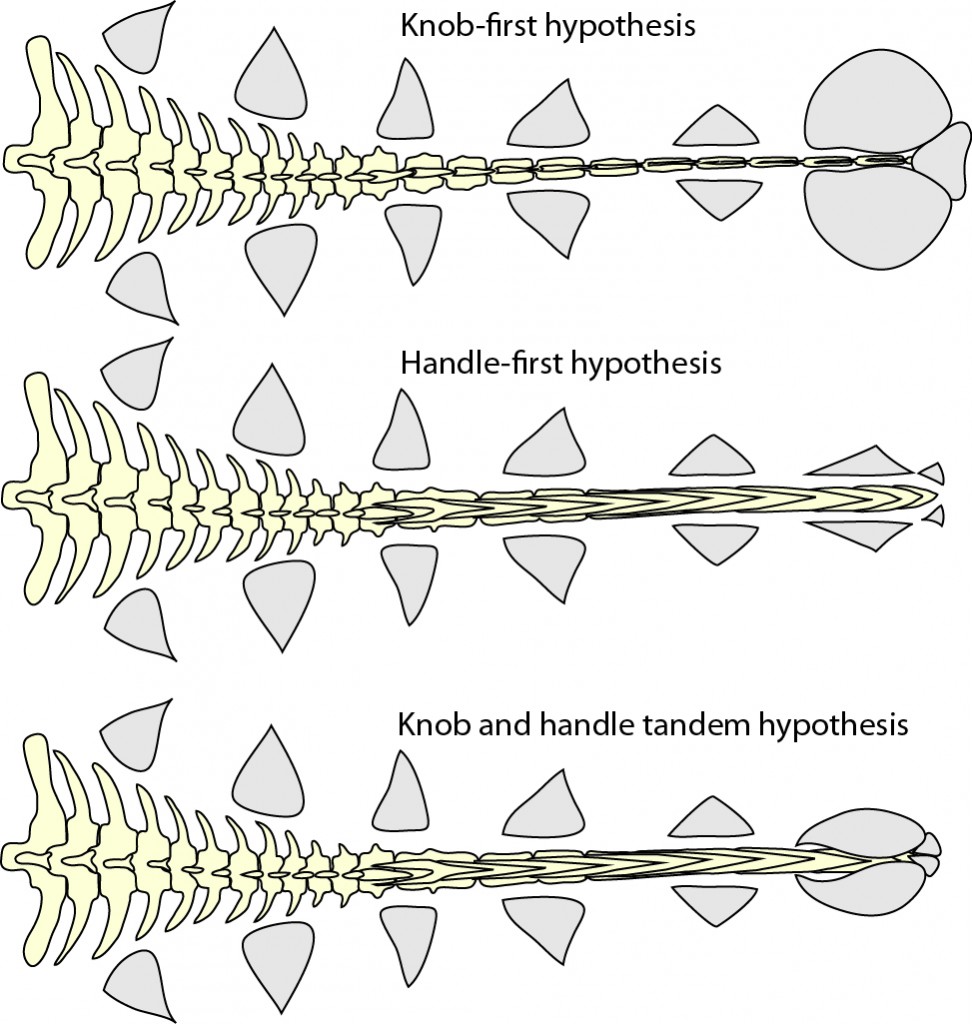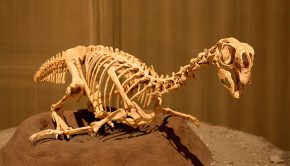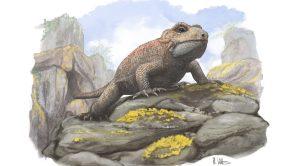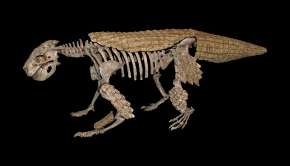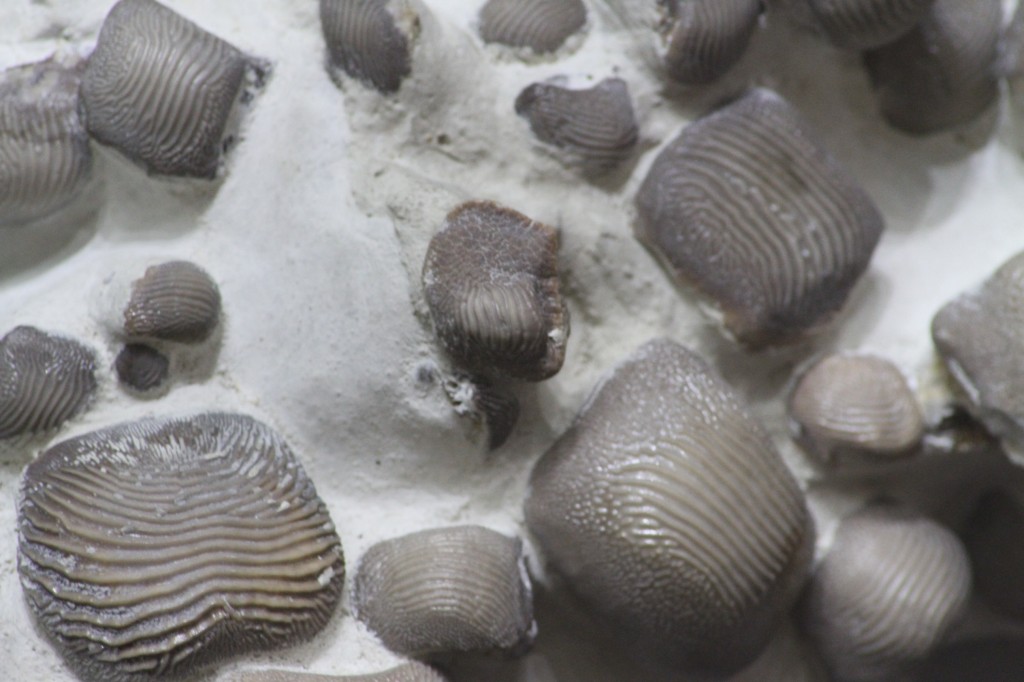Episode 53: Ankylosaurs
Ankylosaurs are a group of non-avian dinosaurs best known for their armour, tank-like bodies, and sometimes large tail clubs. First appearing in the Jurassic, they were common in Late Cretaceous ecosystems, with several species known from around the world. But how different were these species really? And just where did they evolve from? What was that tail for?
Dr. Victoria Arbour of the North Carolina Museum of Natural Sciences is one of the leading experts on ankylosaurs, and has published a number of papers, including a recent study on how the tail club evolved. We spoke with Victoria about these dinosaurs and she answered some of these questions for us.
Podcast: Download (Duration: 45:23 — 62.3MB)
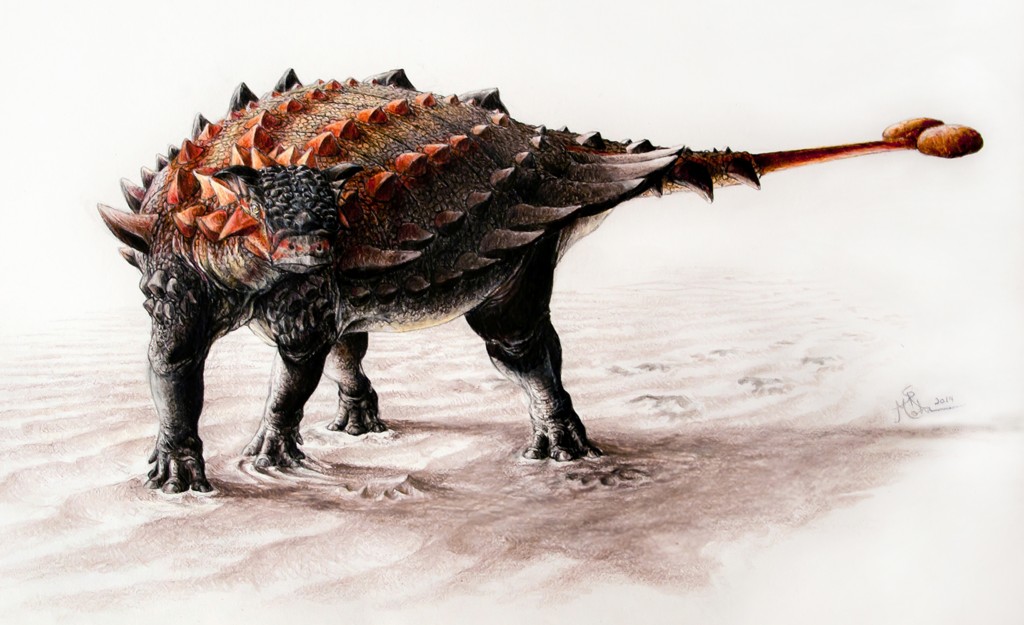
Ankylosaurine ankylosaurids, like Ziapelta from New Mexico, had tails modified into axelike weapons that we call tail clubs. (Sydney Mohr)
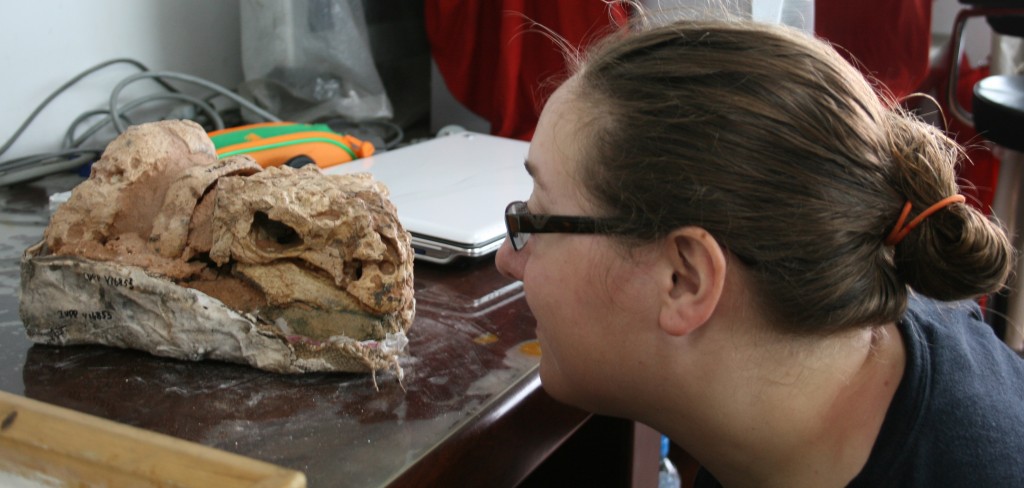
This is a juvenile specimen of Pinacosaurus (with Victoria’s head for scale), found in a cluster of other juveniles during the CanadaChina Dinosaur Project in the late 1980s.
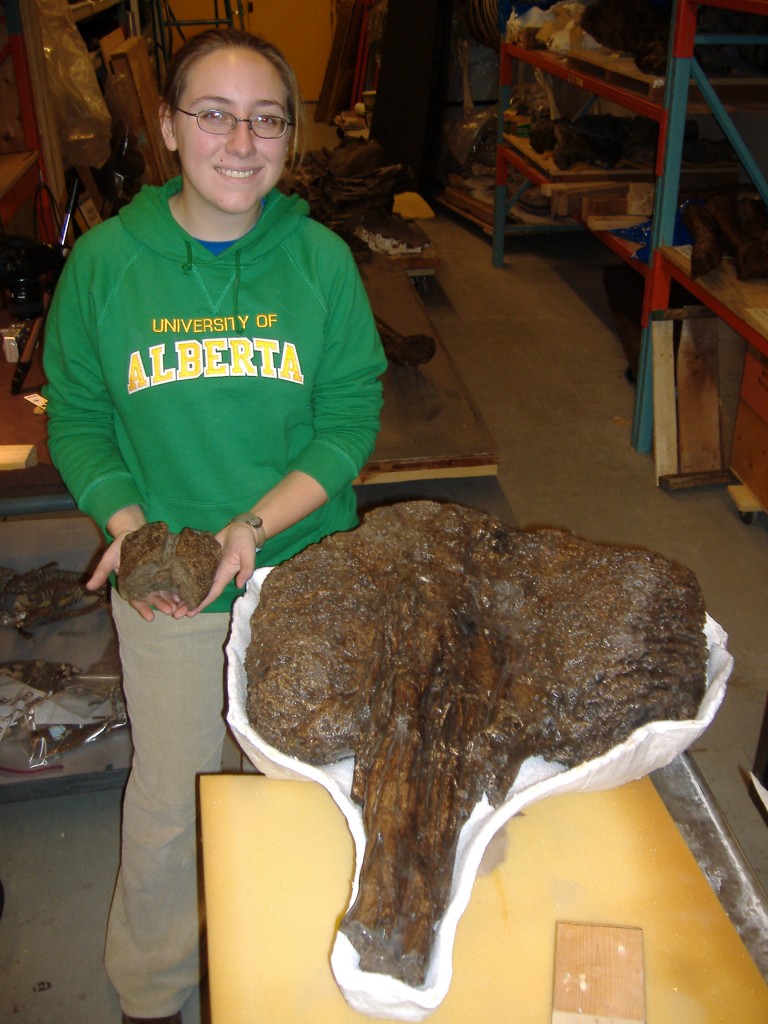
Two tail club knobs at the Royal Ontario Museum. Victoria is holding the smallest known club, and standing next to one of the biggest.
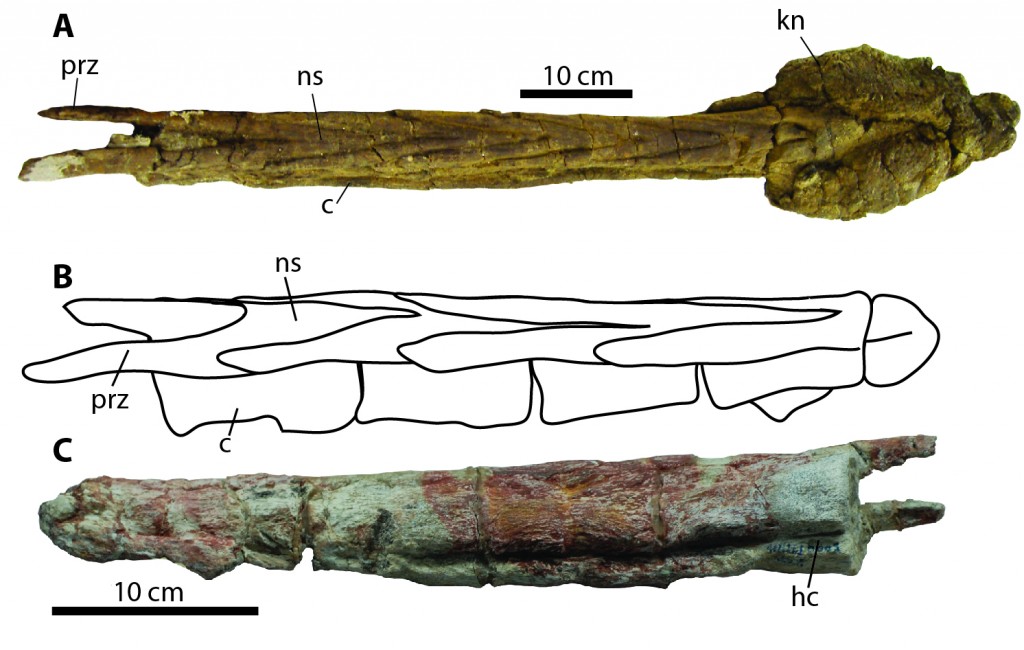
Top: the tail club of Dyoplosaurus has modified vertebrae and large osteoderms. Bottom: Gobisaurus has modified vertebrae like those of Dyoplosaurus, but no large osteoderms. (Victoria Arbour)
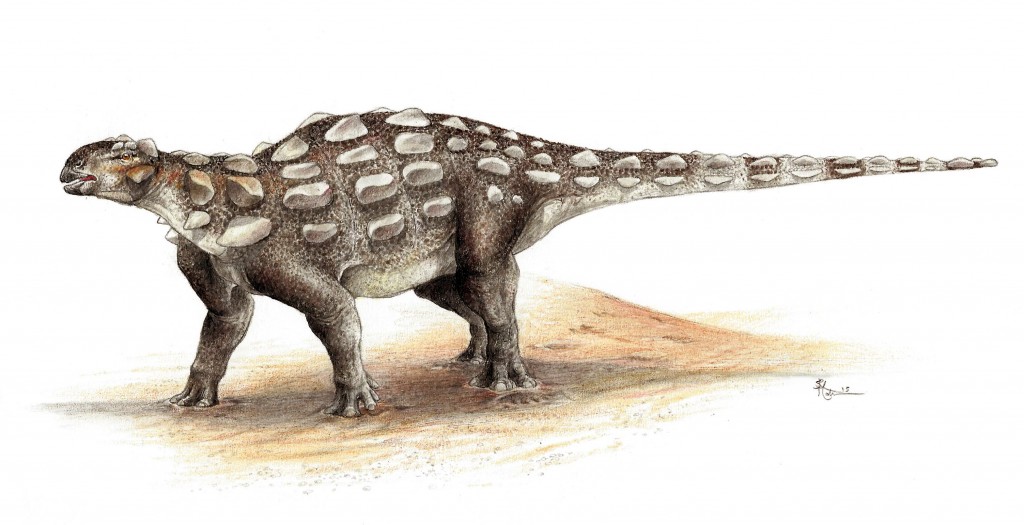
Gobisaurus would have had a stiff tail, but probably did not have a large knob of bone at the tip. (Sydney Mohr)
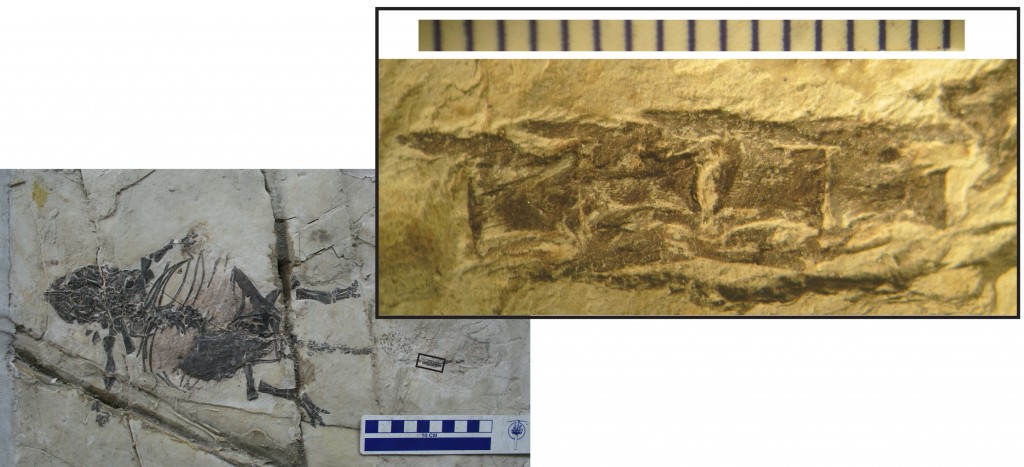
Liaoningosaurus is the earliest example of an ankylosaur with tail vertebrae with long, robust prezygapophyses. (Victoria Arbour)

